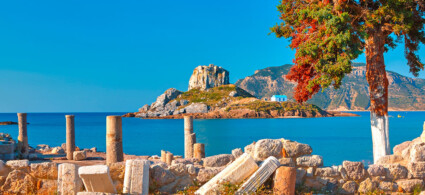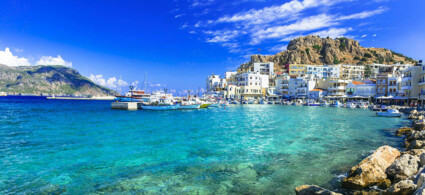

The archipelago of Dodecanese is a complex of islands, 12 large and about 200 small and very small, in the southern part of the Aegean Sea, between the coasts of Turkey to the east and the Cyclades islands to the west.
The Dodecanese islands do not have a geographical unity but are characterized by crystal clear waters, sandy or pebbly beaches, important archaeological finds, Byzantine monuments and medieval architecture due to the long Venetian domination. What these islands have in common is their history and their occupations: from that of the Crusader Knights to that of the Turks, from the Italian occupation to the Greek annexation.
Each island boasts its own charm, enchanting landscapes and a clear sea, an uncontaminated nature and important traditions. The less known and uncontaminated ones are Leros or Pserimos whereas Rhodes and Kos, the biggest and most cosmopolitan islands, are the destination of vacationers all year round.
Also Karpathos is affirming itself touristically while Kalymnos is destination of the tourism of niche of the lovers of the climbs on rock. Tilos has a huge ecological park protected by international treaties, Patmos is very popular with pilgrims since in one of the island’s caves John the Theologian, one of Christ’s disciples, wrote the Book of Revelations and Astypalea is the westernmost island of the archipelago and has architectural features of both the Cyclades and the Dodecanese.
Villages to visit besides Rhodes Town, are Lindos in Rhodes, Olympos in Karpathos, Zia in Kos and Chorio in Simi. In addition, every single island and islet is in itself a unique natural museum.



